Yes, we did it: Florence in four days. We arrived on a Tuesday from the US and left on a Saturday to return home. Spending less than a week in Europe was not ideal; we had a short window between our daughter’s swim meets and felt we had to take advantage of the time. This meant preparing a detailed schedule in advance and hiring a tour guide to keep us on track. If anything went amiss, for instance, if there were any delays, we were toast. But we were willing to take that risk. So, using our accumulated credit card and frequent flyer points, we booked hotel and airfare, choosing Florence as our destination.
With our love of art history and my husband’s vast knowledge of Renaissance art, we both felt that a visit to the Renaissance city of Florence would be both educational and entertaining. Florence lies in the heart of Tuscany and is a city that effortlessly weaves the past and present, captivating visitors with its art, architecture, and culinary offerings. From iconic landmarks to hidden treasures, the city unveils the promise of adventure through its cobblestone streets, charming trattorias, world-class museums and–need I mention–shopping.
I realize many of you reading this post have your favorites in Florence, so if I have not touched on them (remember…we only had 4 days), please include them in the comments below! Ciao! xoM
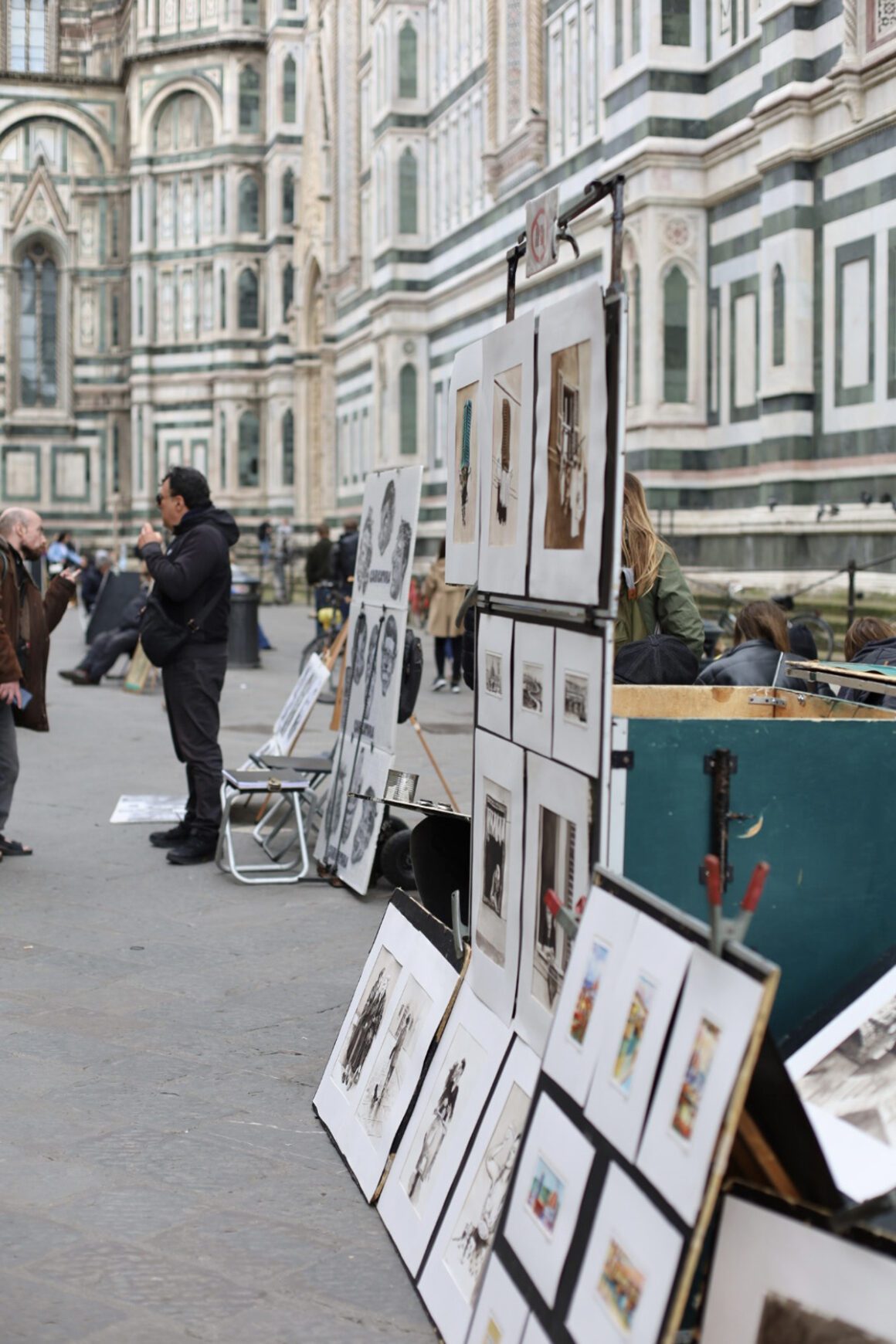

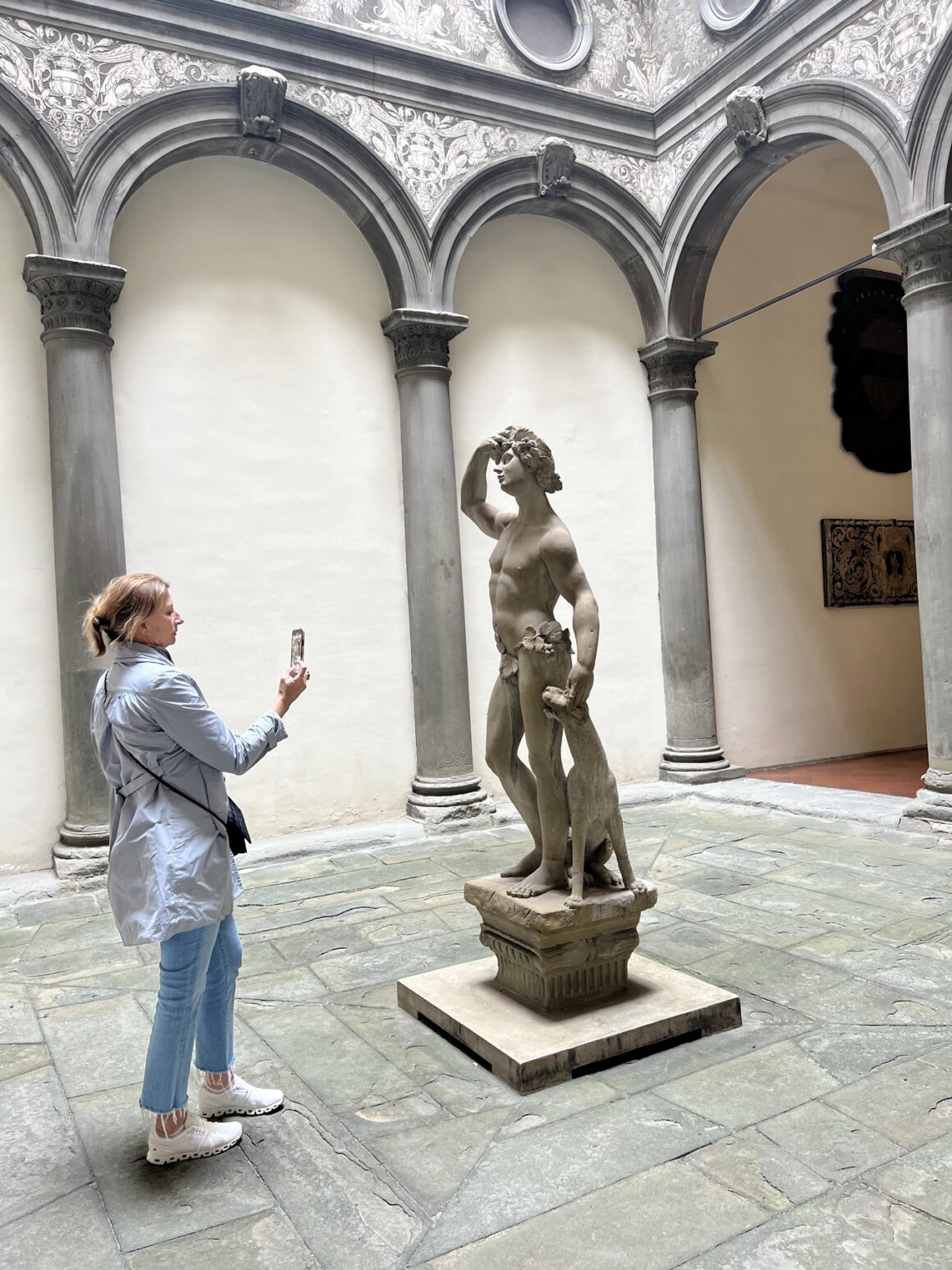





Arrival and Hotel Information
We arrived on a direct flight from Philadelphia to Rome and took the bullet train out of Roma Termini for the hour-and-a-half ride to Florence. Landing at the FCO airport, we took a commuter train to the Roma Termini to catch our connecting train to Florence. You can conveniently book train tickets directly through ItaliaRail or through a reliable third-party app such as Trainline. Trainline, a digital travel platform, not only sells train and bus tickets but also provides free access to live train times and railway station information, making your travel planning a breeze. Our transfers were seamless, and we were in Florence by 2:30 pm.
We stayed at the Hotel Lungarno (Borgo S. Jacopo, 14) which is part of the Lungarno Collection, a group of luxury hotels owned by the Ferragamo family. We chose the hotel based on friends’ recommendations and its proximity to major attractions in Florence, including the Ponte Vecchio and the Uffizi Gallery. The hotel is situated along the south side of the Arno River, and our room looked out onto the river, providing stunning views of the iconic landmarks of Florence. As you can imagine, since the luxury fashion house of Ferragamo owns it, the hotel is known for its focus on art and design. The interiors were stunning. Plus, included in our stay was an incredible breakfast buffet that we enjoyed every morning.

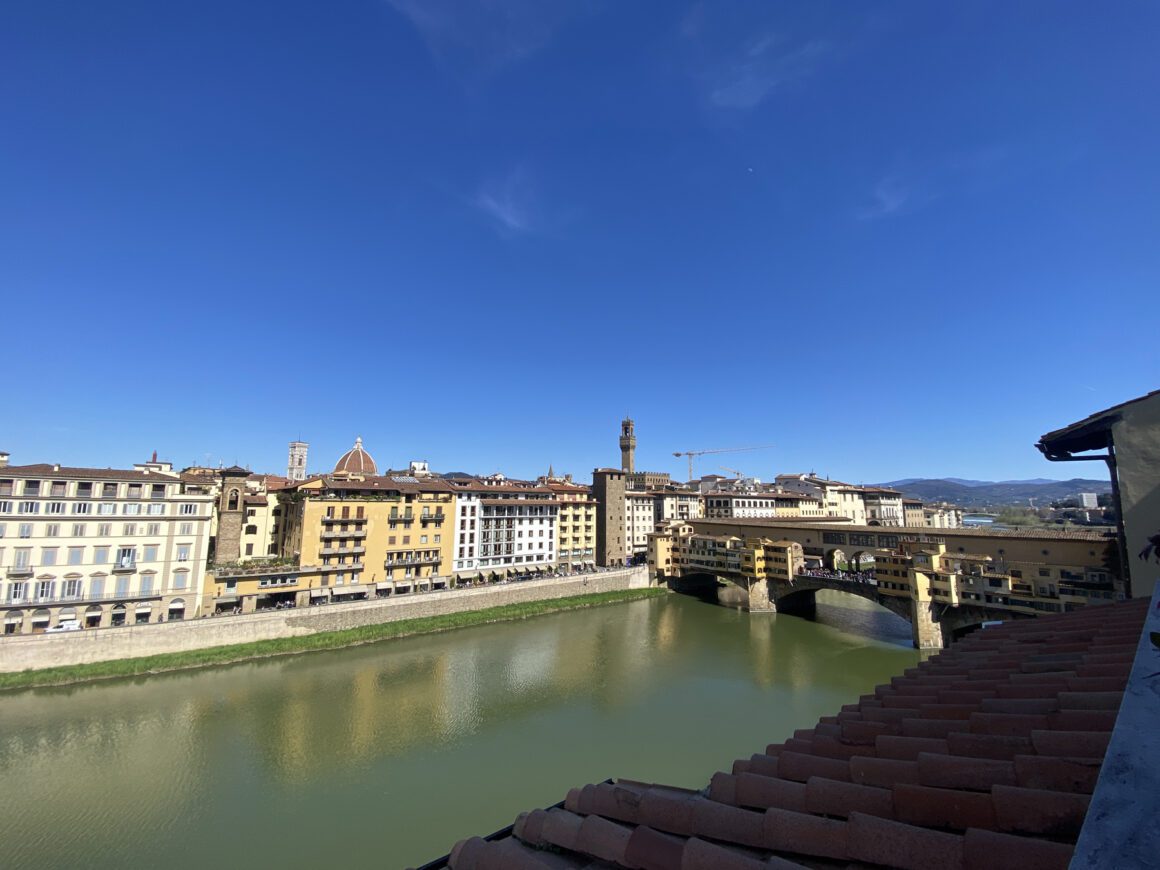
WHAT WE VISITED
Battistero di San Giovanni
The Battistero di San Giovanni, also known as the Baptistery of Saint John, is a prominent medieval baptistery located in the Piazza del Duomo in Florence, Italy. Renowned for its distinct octagonal shape, the Baptistery is admired for its beautiful marble façade and impressive bronze doors, including the famous Gates of Paradise by Lorenzo Ghiberti. It is one of the oldest buildings in Florence, dating back to the 11th century, and holds significance as a site for religious ceremonies, particularly baptisms.


Duomo – Cattedrale di Santa Maria del Fiore
The Duomo, formally known as the Cattedrale di Santa Maria del Fiore, is the iconic cathedral of Florence, Italy. Renowned for its distinctive dome designed by Filippo Brunelleschi, the Duomo is a masterpiece of Renaissance architecture. The cathedral, dedicated to Santa Maria del Fiore (Saint Mary of the Flower), features a stunning façade adorned with intricate marble designs and sculptures. The interior houses notable works of art, including frescoes and stained glass windows. The Duomo complex also includes Giotto’s Campanile (bell tower) and the Baptistery of San Giovanni. The Duomo stands as a symbol of Florence’s cultural and artistic heritage and is a UNESCO World Heritage Site.
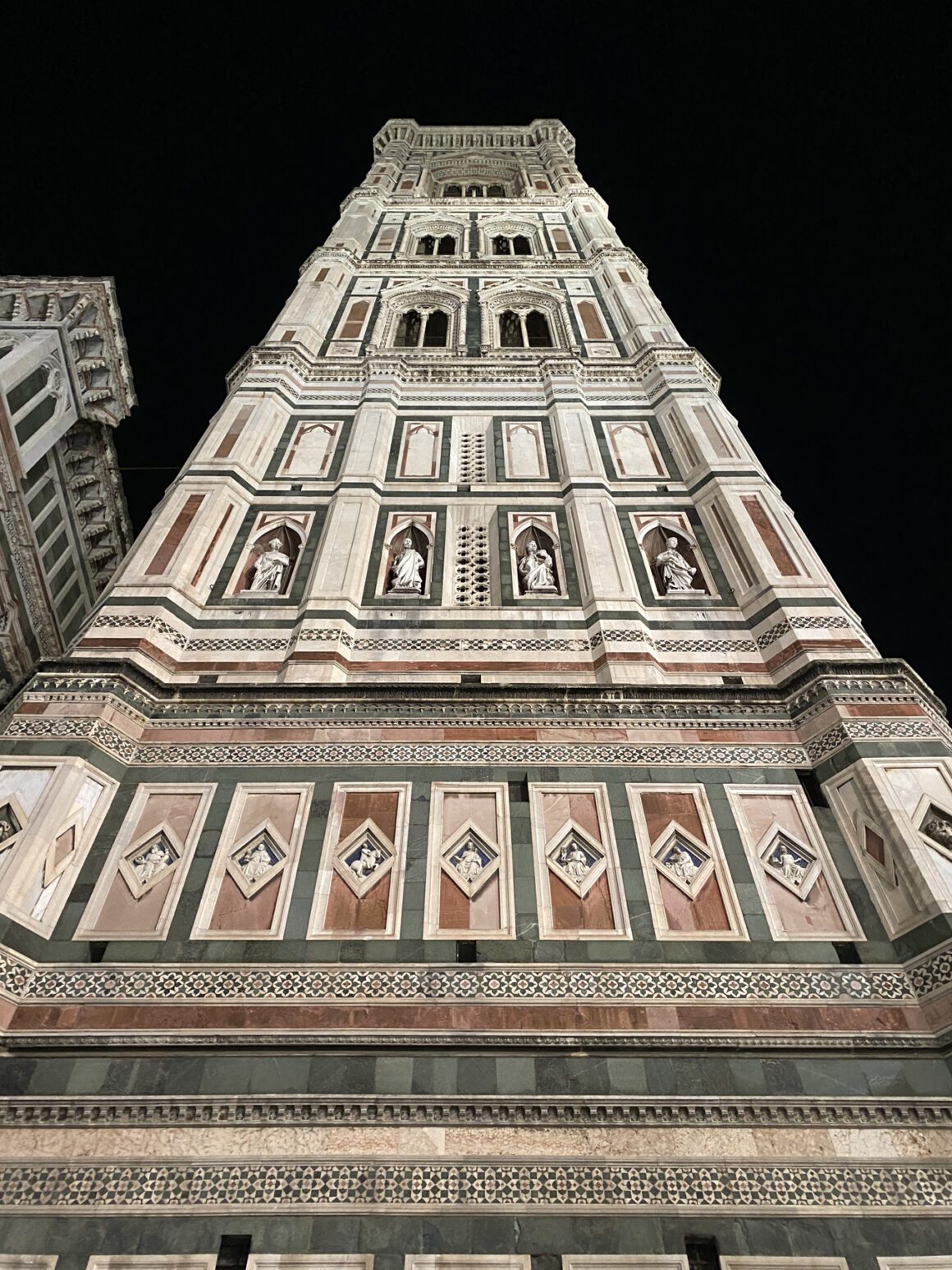
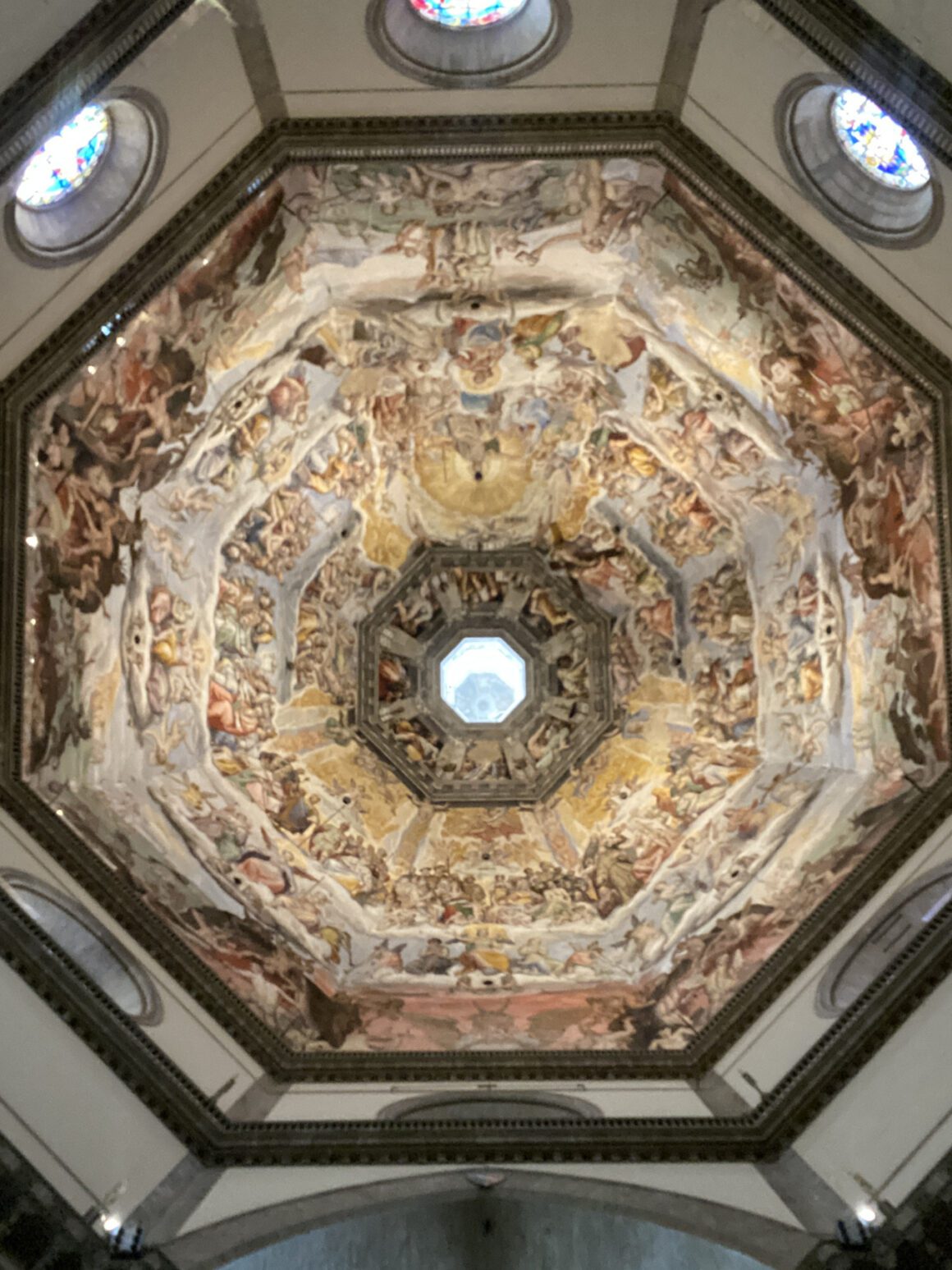
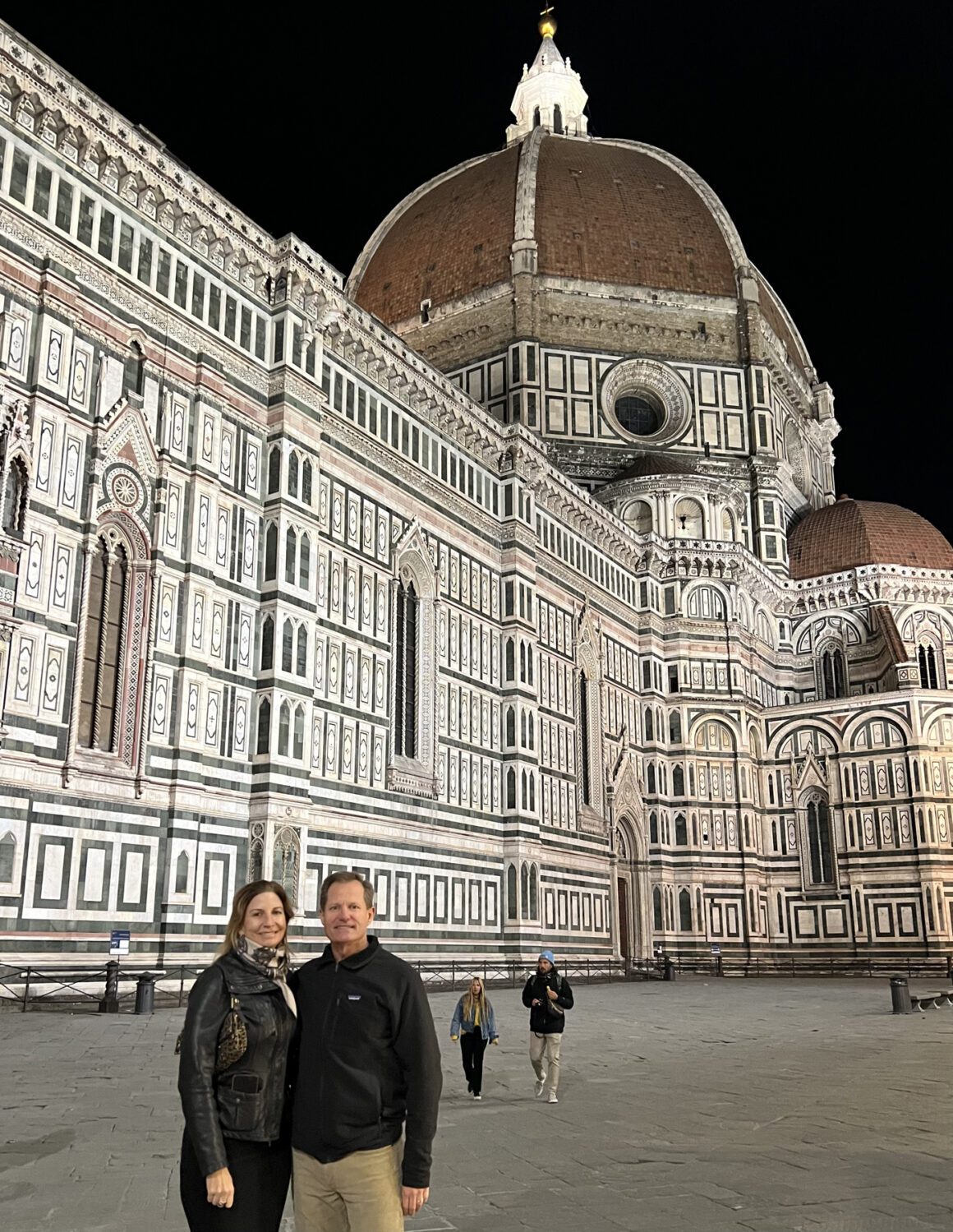
Museo del Bargello
Construction on the fortress-like building of the Bargello Museum began in 1255 as the seat of Florentine government. In the 16 century, it became a prison as well as the home to the chief of police (Bargello) from which it takes its present name. Following extensive renovations, the building opened as a museum in 1865. The Bargello contains a wonderful medley of applied arts and Italy’s finest collection of Renaissance sculpture; it is also Florence’s second ranking museum after the Uffizi. The Michelangelo Room contains important works by the artist such as the sculptor’s first large free-standing work, the Bacchus (1497), as well as Brutus (153-40), the only known portrait bust by Michelangelo, and a beautiful circular relief of the Madonna and Child (1503-5).
Museo della Cappelle Medicee
The Medici Chapels are a vast complex of chapels of great historical and architectural interest. The large crypt, which holds the tombs of the Medici family, was built following a design by Buontalenti. The underground chambers of the Church of San Lorenzo, restored after the flood, hold the simple and suggestive Tomb of Cosimo the Elder, inserted into the central pillar, and the Tomb of Donatello, whose plaque was placed there during a later period (18th century). Stairs lead up to the Chapel of Princes, the sumptuous mausoleum of the Medici grand dukes, begun by Matteo Nigetti in 1604 following a design by Don Giovanni de’ Medici, the natural son of Cosimo I.

Museo dell’Opera del Duomo
The Museum was founded in 1891 but in 2015 it was radically renovated. It is conceived as an educational path to discover the places and artists who gave life to the monumental complex of the Opera, the cradle of the Renaissance, and it is today one of the most important museums in the world, both for the value and the number of works of art kept inside, as well as for the architectural and technological avant-garde of its environments and its museographic equipment. Here are preserved the original masterpieces of art that over the course of seven centuries have decorated its monuments: from Michelangelo, to Donatello, Brunelleschi, Ghiberti and countless others.
Basilica di Santa Croce
This Franciscan church, begun in the late 13th century and completed over several centuries, stands as a magnificent example of Italian Gothic architecture. Notably, Santa Croce serves as the final resting place for some of Italy’s most esteemed figures, including Michelangelo, Galileo Galilei, and Niccolò Machiavelli. The interior contains Cimabue’s crucifix, Giotto’s frescoes, and Donatello’s poignant sculpture of St. Louis of Toulouse. Brunelleschi’s Pazzi Chapel, within the complex, stands as a Renaissance masterpiece.
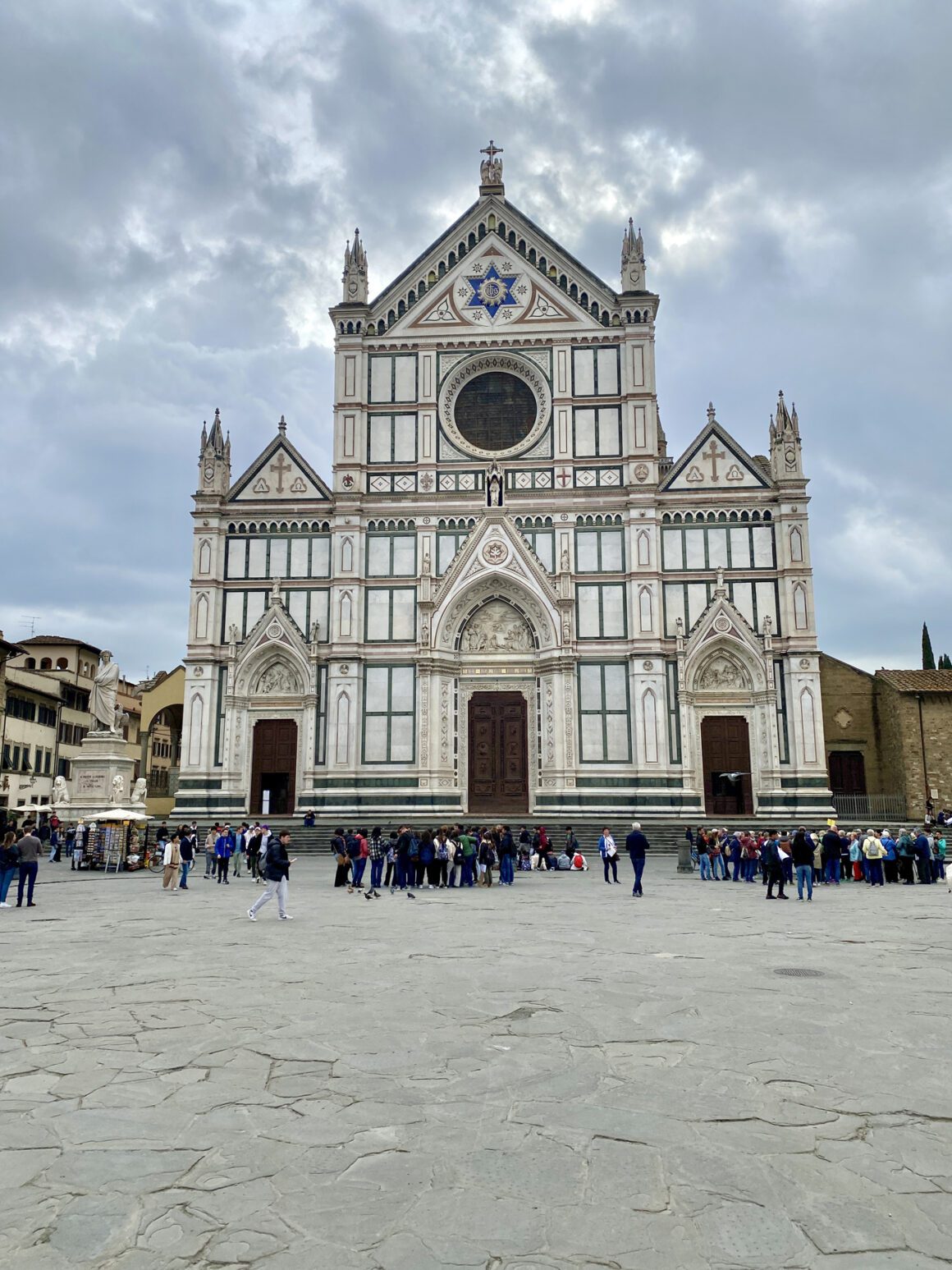

Mercato Centrale
The Mercato Centrale, in the heart of Florence’s San Lorenzo district, is a historic market traced back to the late 19th century. Its architectural charm is evident in the iron-and-glass structure designed by Giuseppe Mengoni, the mind behind Milan’s Galleria Vittorio Emanuele II. Inside the market hall on the ground floor, vendors present an array of fresh produce, meats, cheeses, fish, and other local delights. The first floor has undergone a transformation into “Mercato Centrale Firenze,” a contemporary food court. Here, a diverse selection of stalls offers regional and Italian specialties, inviting patrons to savor everything from pizza and pasta to gelato and espresso. Definitely stop for (in this order) a glass of wine, some pasta from Pasta Fresca (get the fagottini in olive oil and parmeggiano) and an espresso.

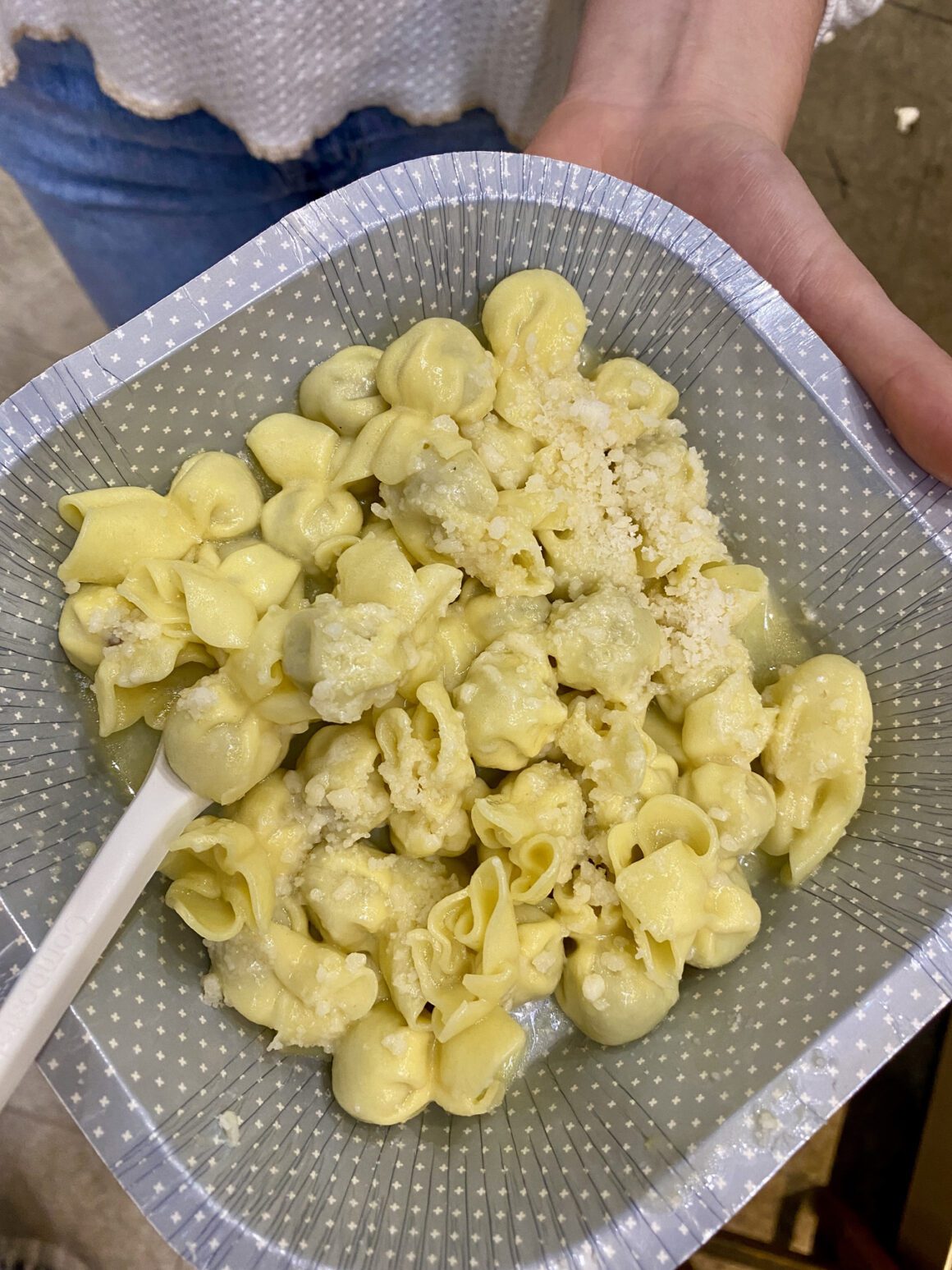
Uffizi Gallery
Designed by Giorgio Vasari in the 16th century as government offices, the Uffizi transformed into a distinguished art museum, housing the magnificent collection of the influential Medici family. Herein lies a repository of Renaissance masterpieces, showcasing the genius of artists like Leonardo da Vinci, Michelangelo, Raphael, Botticelli, Caravaggio, and Titian. Among its treasures, Botticelli’s “The Birth of Venus” stands as an iconic symbol of the Renaissance spirit. Everyone says you need a full day for the Uffizi, which we did not have, which made having a guide take us to the most important pieces was key and worth the money.
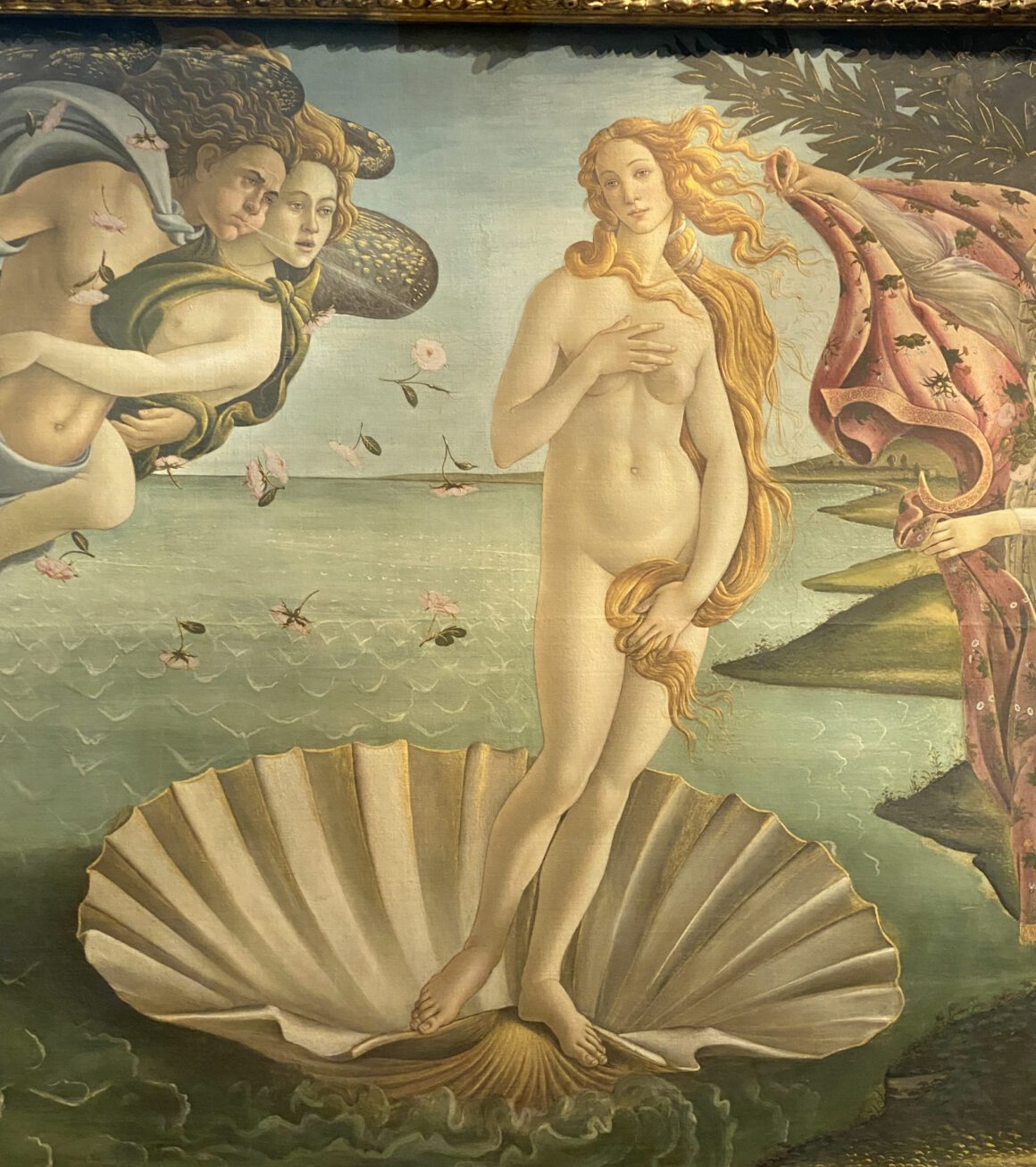

Cathedral of Santa Maria Novella
The Church of Santa Maria Novella in Florence, Italy, stands as a testament to the city’s rich artistic and religious heritage. One of its most renowned artworks is Masaccio’s Trinity, located in the church’s main chapel. Painted in the early 15th century, the Trinity fresco is a masterpiece of perspective and realism. It depicts the crucified Christ with God the Father and the Holy Spirit above, all set within a meticulously rendered architectural setting. Masaccio’s innovative use of linear perspective creates an illusion of depth and space, drawing viewers into the sacred scene.


Historical Pharmacy of Santa Maria Novella
Established in the early 17th century by the Dominican friars of the nearby Basilica of Santa Maria Novella, this pharmacy is recognized as one of the oldest in the world. The pharmacy’s shelves are adorned with an array of beautifully crafted glass jars, ceramic containers, and ornate bottles, each containing medicinal herbs, powders, and elixirs. The displayed products showcase the rich botanical and pharmaceutical knowledge cultivated by the Dominican friars. The pharmacy’s collection includes an impressive array of perfumes, soaps, and skincare products, all created using traditional recipes and artisanal techniques.

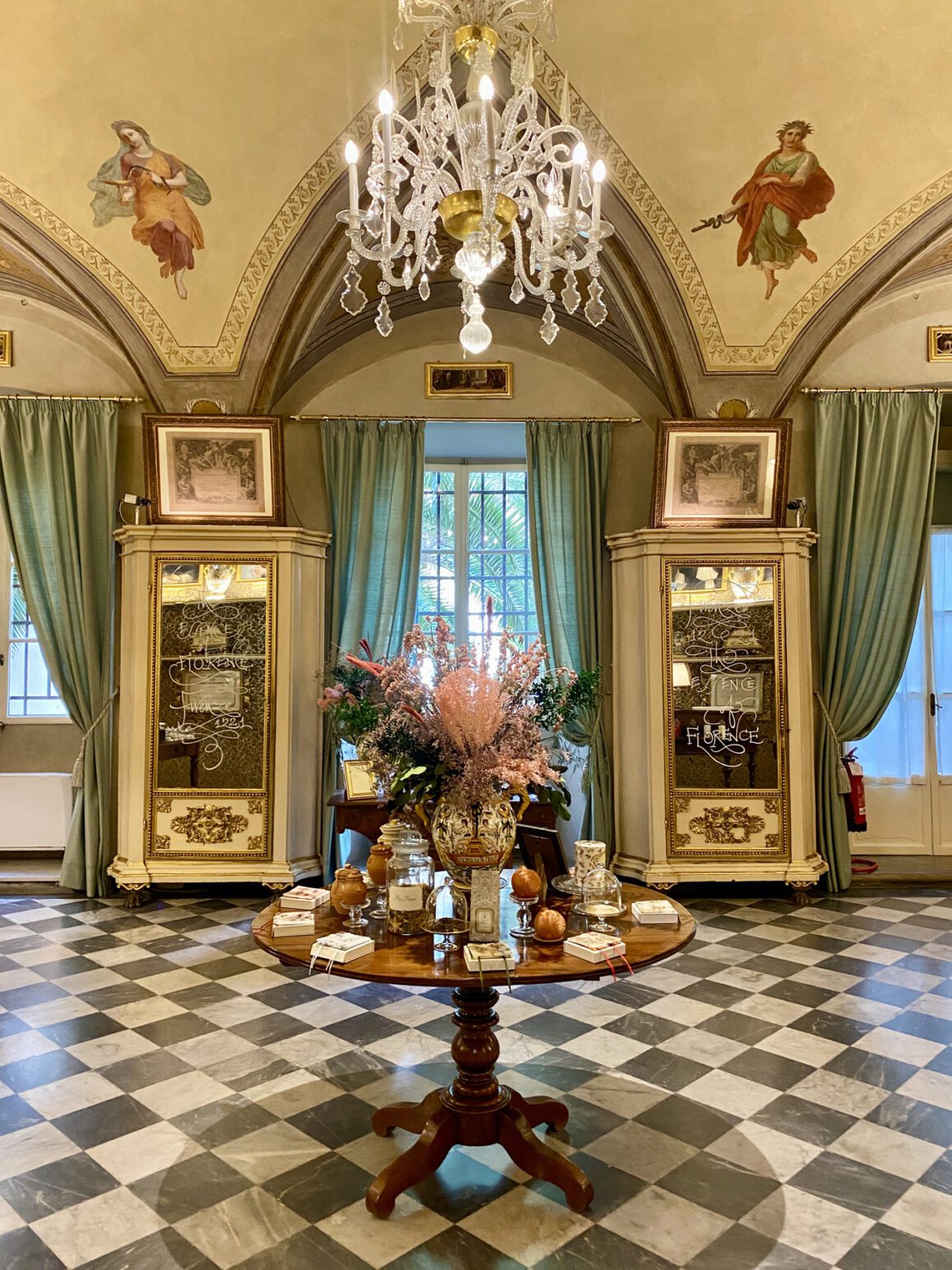
WHERE WE DINED
Il Santo Bevitore. “Il Santo Bevitore” translates to “The Holy Drinker” in English. I found a recommendation on IG for this place, and it was perfect for our first night as it was located down the stree from the Lungarno. Il Santo has an extensive wine list, offering a selection of both local and international wines. The menu often features a mix of traditional and innovative dishes. We had a meal of Carpaccio, Artichoke Flan, Garganelli, and a kind of fish (sorry I forgot!), and finished with a Vin Santo, a dessert wine that holds a special place in Tuscan wine culture, having become a symbol of the region’s winemaking traditions. It is often served with cantucci, traditional Tuscan almond biscuits. The name “Holy Wine” suggests its historical use in religious ceremonies, where it was often consumed during Mass. Via Santo Spirito, 64r
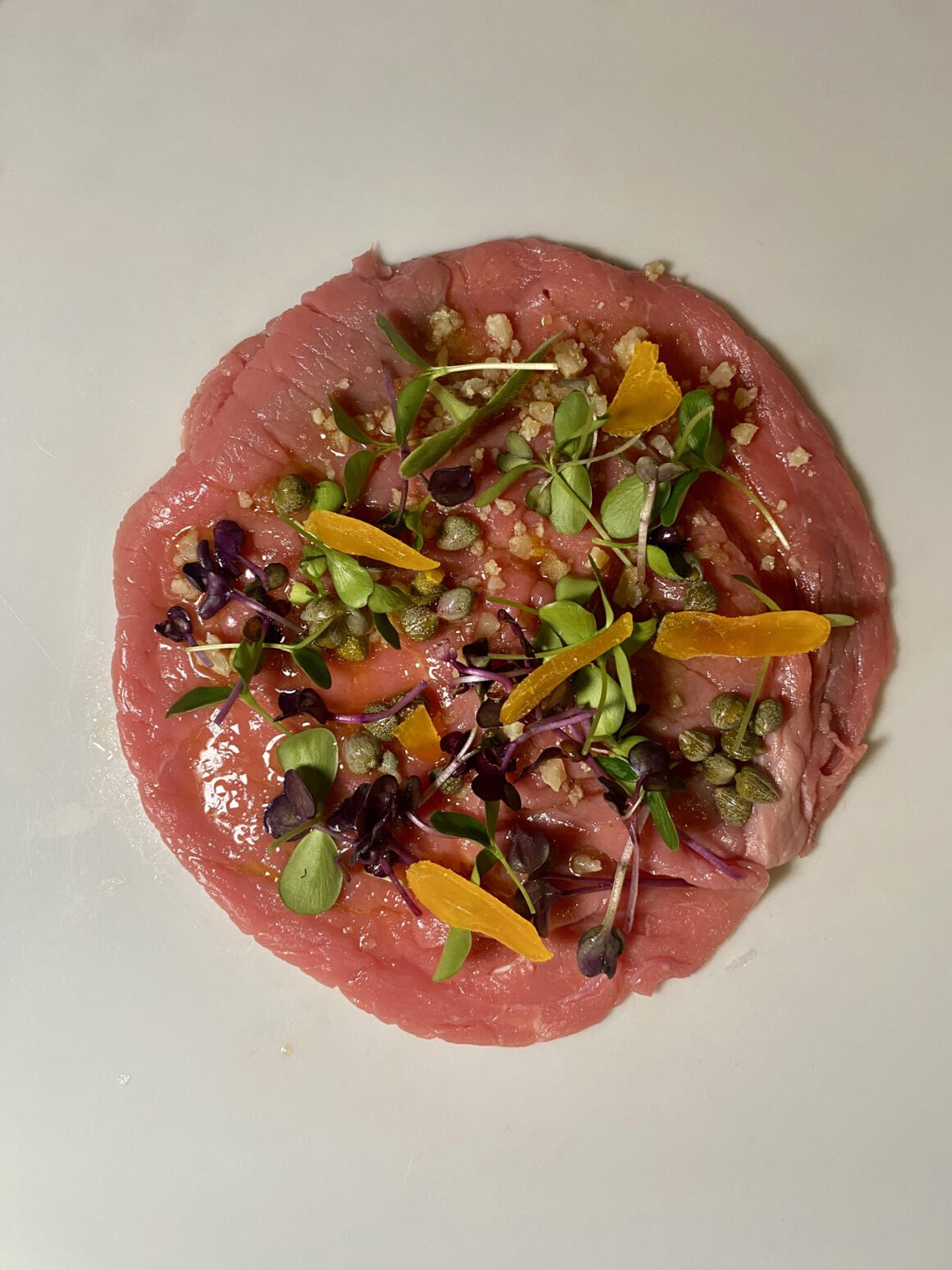

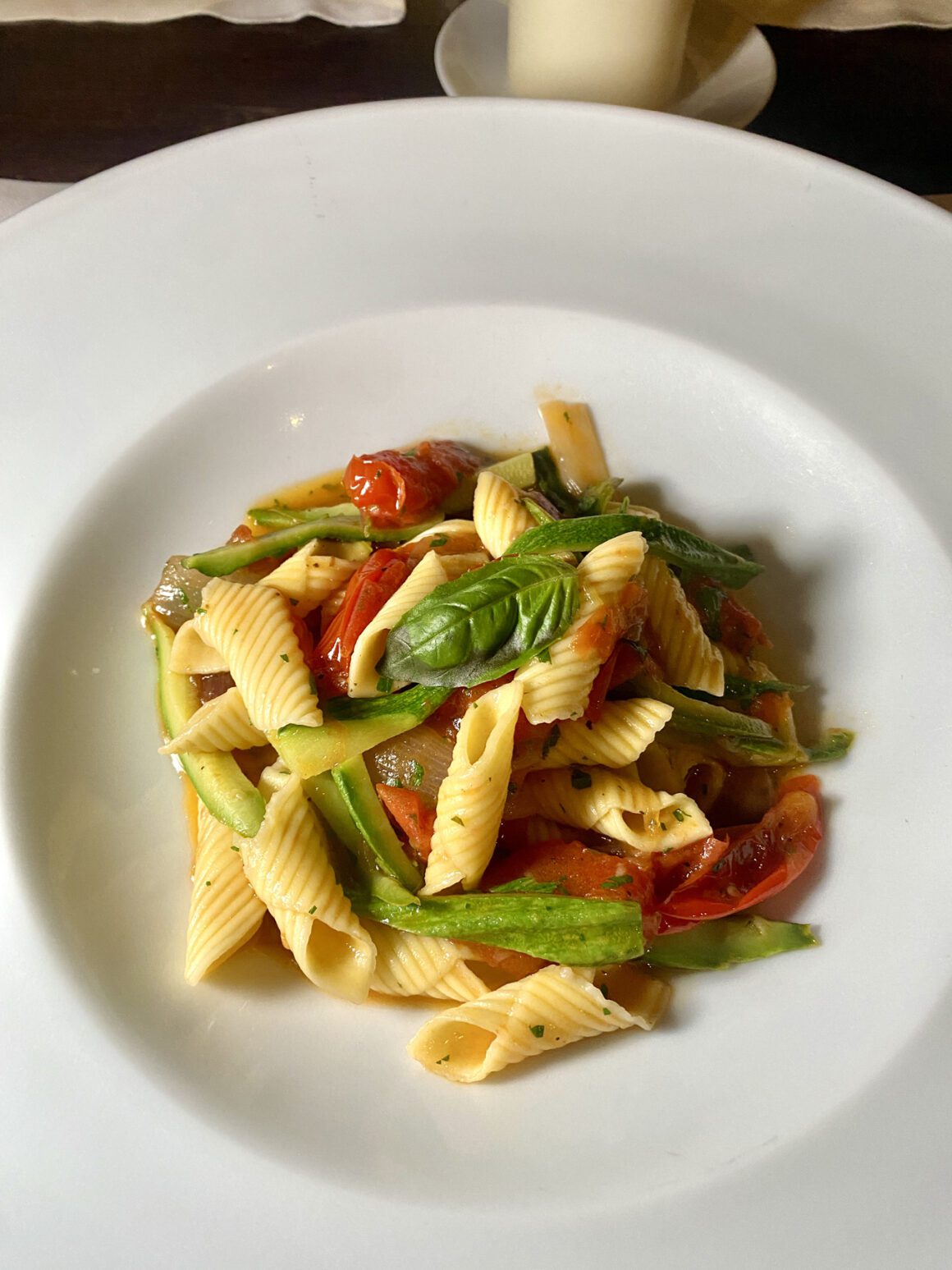
Trattoria da Mario. Trattoria da Mario is a well-known trattoria in the San Lorenzo neighborhood near the Mercato Centrale. The menu includes classic Tuscan specialties like ribollita (one of the best on the trip!), pappa al pomodoro, and bistecca alla fiorentina. The trattoria traditionally operates on a no-reservation basis, and guests often share communal tables. Via Rosina, 2r

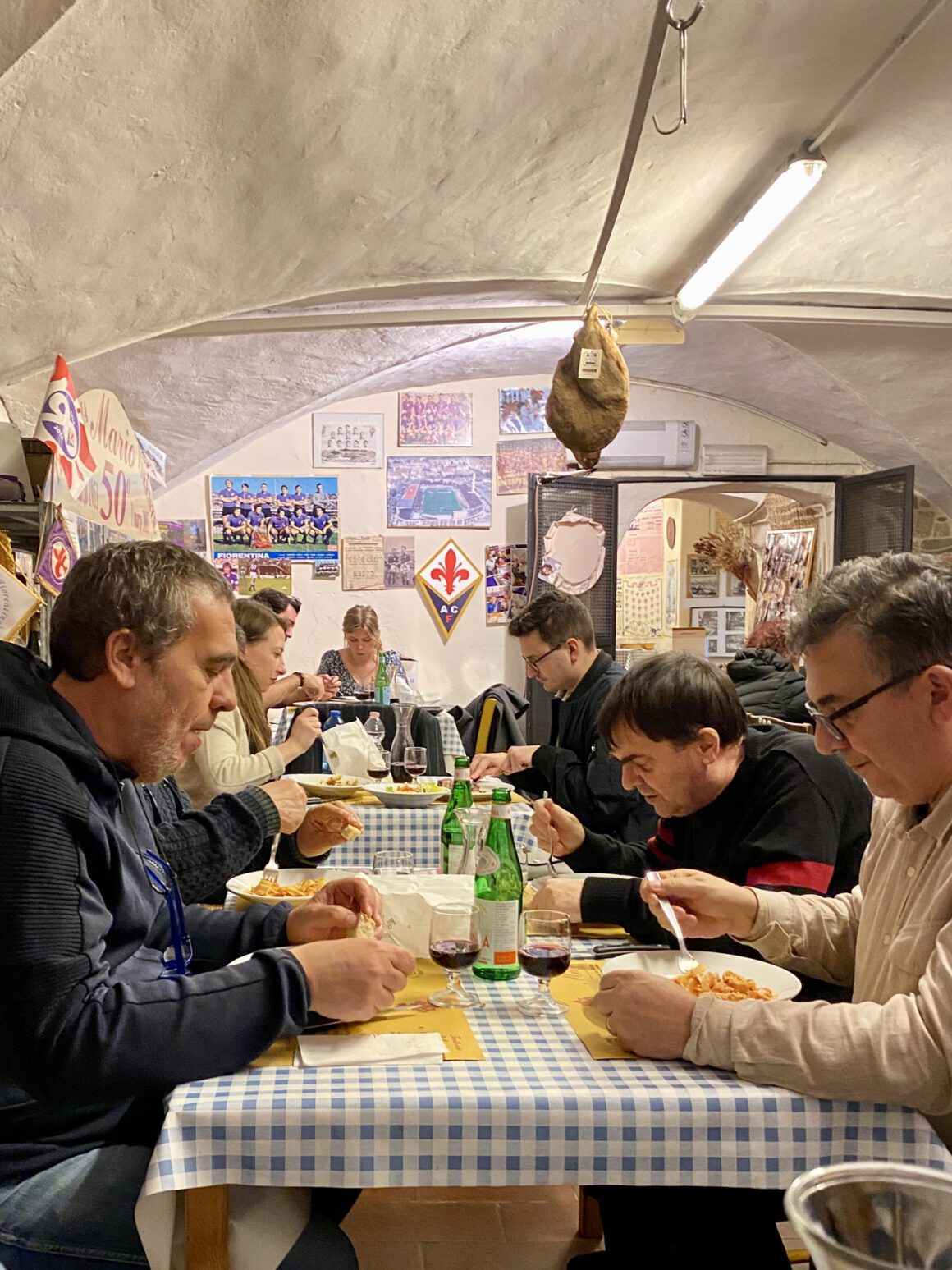
Gucci Osteria. Located within the Gucci Garden complex, this dining establishment is a collaboration between the fashion brand Gucci and Michelin-starred chef Massimo Bottura. Offering a unique blend of high-end fashion and culinary artistry, Gucci Osteria presents a wonderful tasting menu inspired by Italian cuisine with a modern twist. The restaurant is known for its stylish and elegant interior, reflecting the luxury associated with the Gucci brand (the plates are TDF). P.za della Signoria, 10


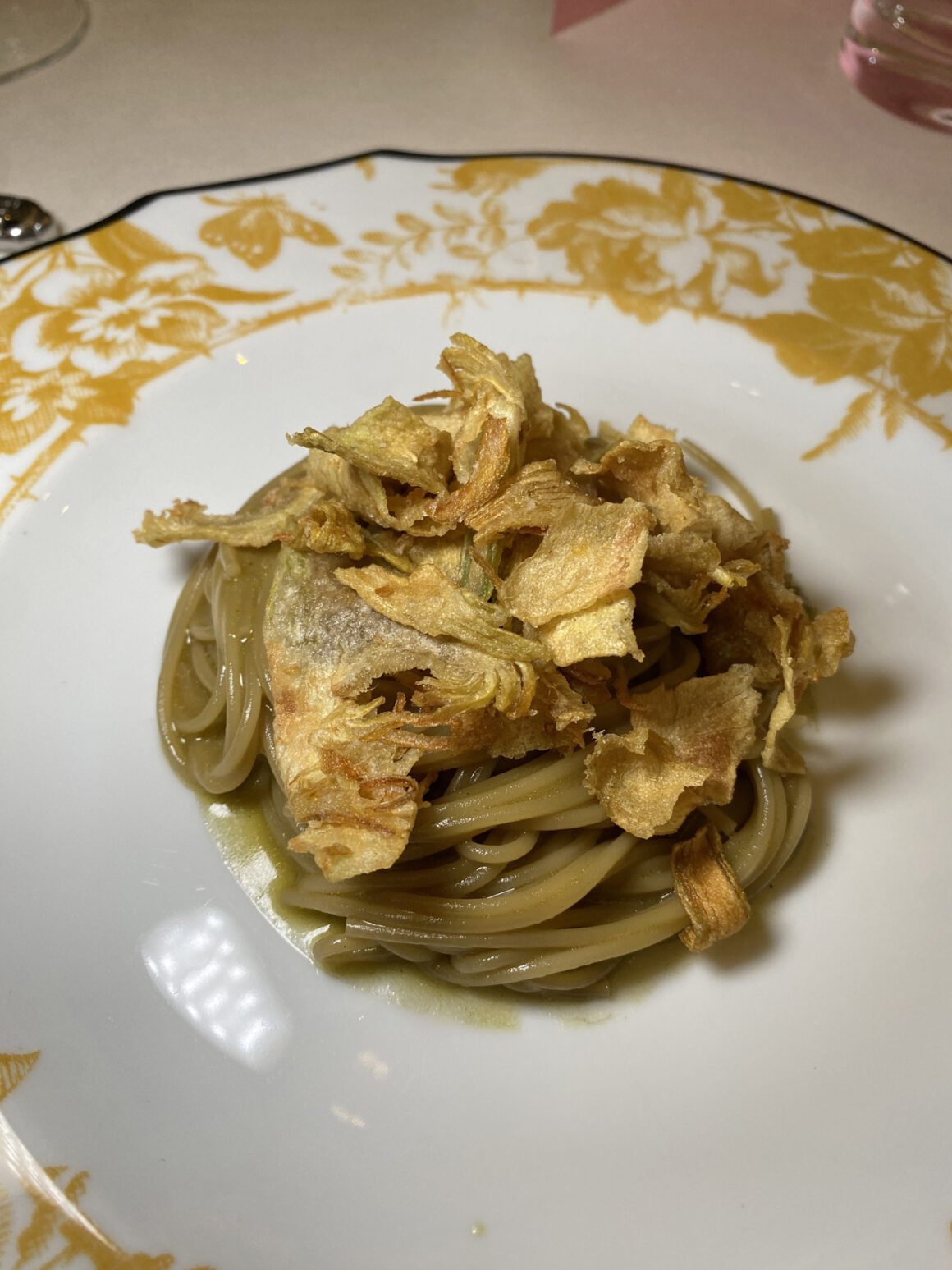

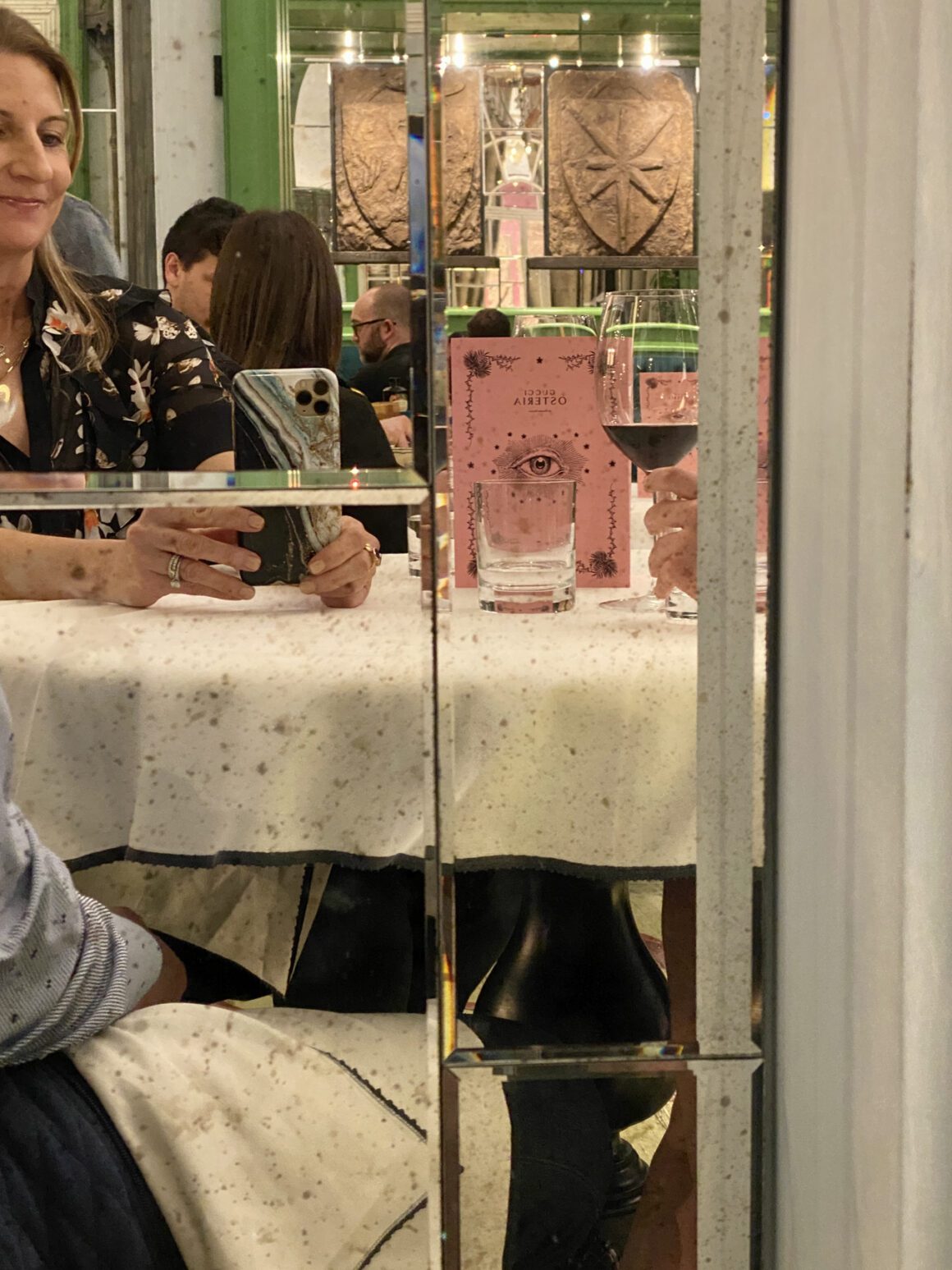

Buca dell’Orafo. A historic restaurant near the Ponte Vecchio, this traditional Tuscan eatery holds a special place in the city’s culinary scene. The restaurant is celebrated for its classic Tuscan dishes, offering a menu emphasizing the region’s rich and flavorful cuisine. We had one of the best meals: fried artichokes, spaghetti with guanciale and artichokes, and tortellini filled with spinach and ricotta in a ragú. Via dei Girolami, 28/R
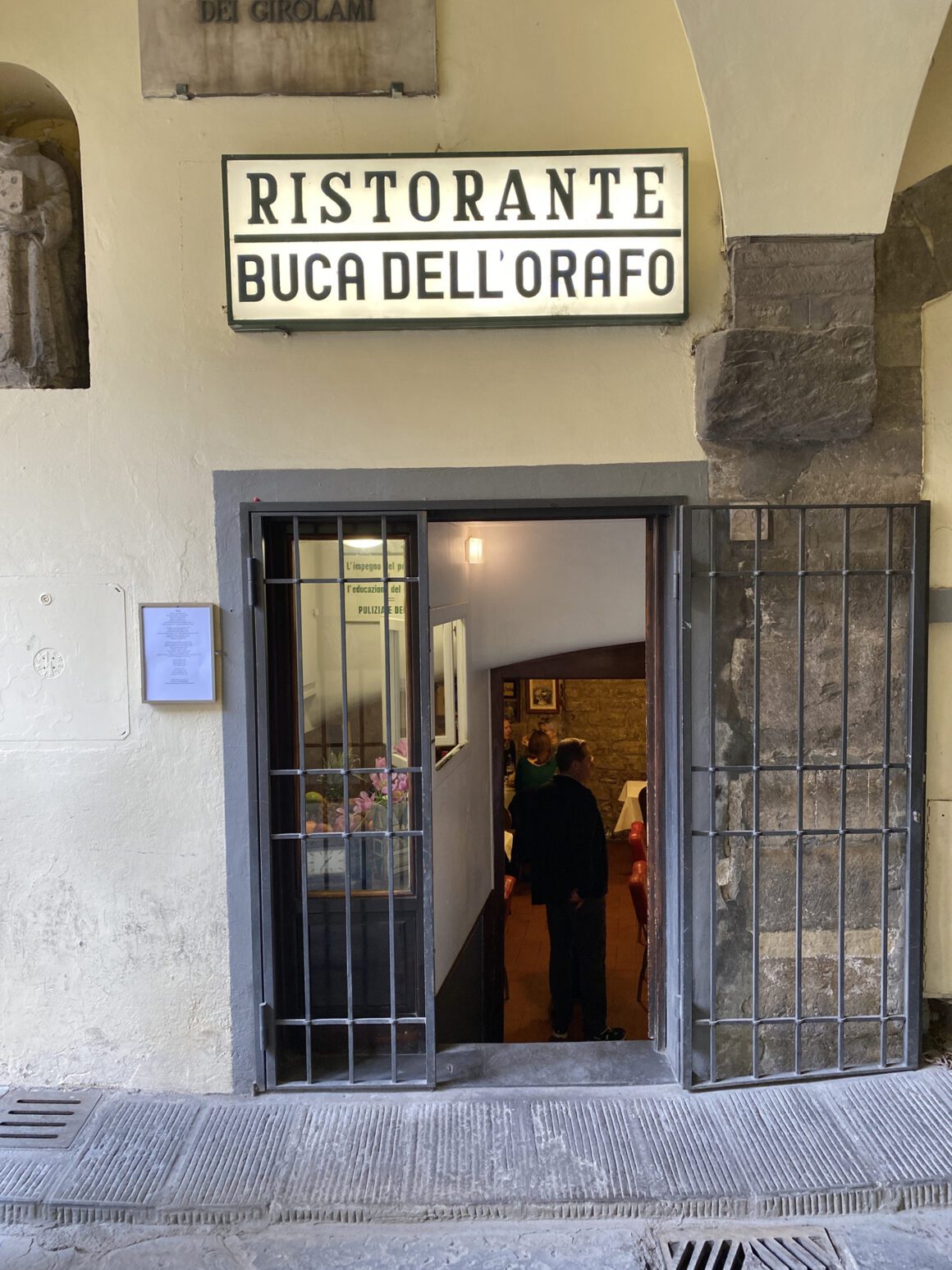


Il Locale. Il Locale is known for its vibrant and lively atmosphere and extensive cocktail list. It attracts a younger crowd with its modern and trendy ambiance. The restaurant offers a diverse menu combining traditional Italian flavors and contemporary twists. One can order the tasting menu or à la carte. We ordered the latter because we weren’t in the mood for a tasting menu. My dish came with only 6 (yes 6) tortellini for 45 Euro(!), but they give you several amuse bouches, so I was actually full (ish). Overall though, it is best just to go for a drink at the bar. Via delle Seggiole, 12r

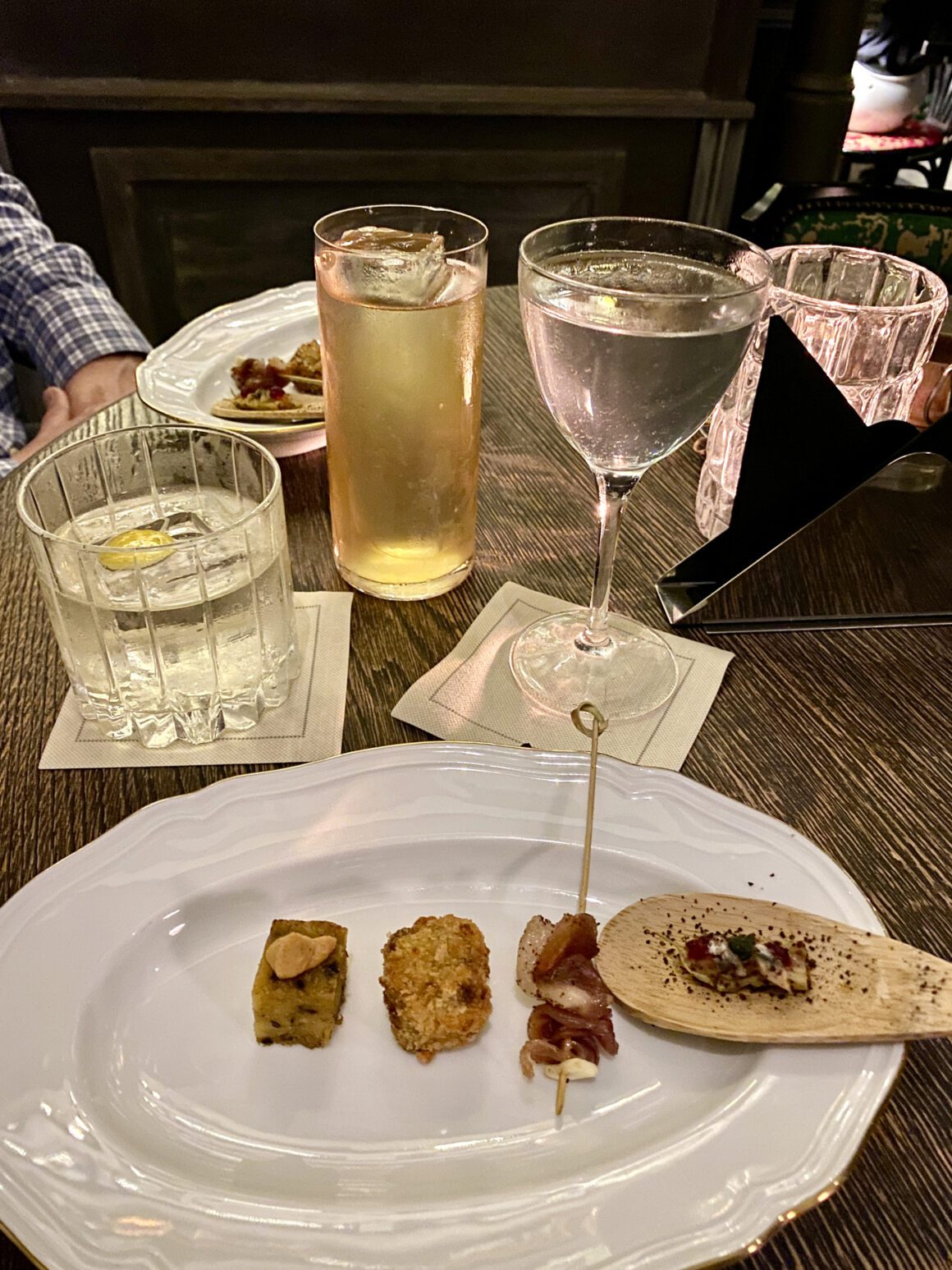

La Bussola 1960. Considered Florence’s most historical and oldest restaurant, La Bussola is owned by Stefano Cresci, a 2nd generation restauranteur whose family purchased it from the original owners in 1960. Signs of the original establishment remain, such as the barstools, but the pizza is reimagined and wonderfully cooked in a wood-fired oven to achieve that perfect crispy crust and delicious flavors. We ordered the Pizza Margherita and Spicy Salami with Calabrian Chilies and Gorgonzola. The ravioli with black truffles and friend zucchini flowers were also delightful. Via Porta Rossa, 56r
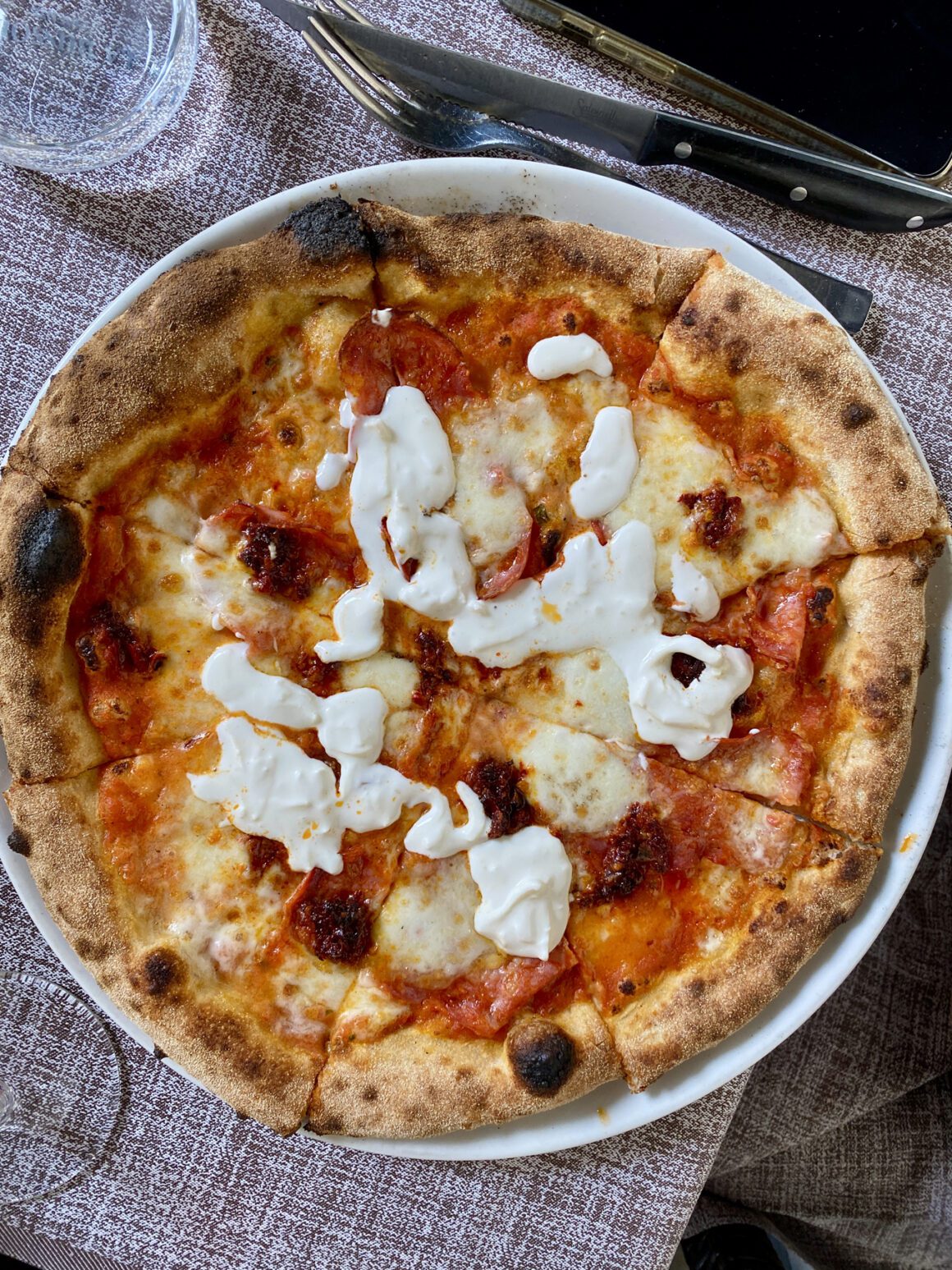

Buca Lapi. So originally I could not get a ressy at Buca Lapi, but our fabulous tour guide made it happen, and I am so thrilled she did. Buca Lapi, situated in the heart of Florence on Via del Trebbio (a stone’s throw from La Bussola), is a venerable establishment with roots dating back to 1880. It occupies a former wine cellar and the vaulted ceiling is a stunner. The cuisine at Buca Lapi is emblematic of traditional Tuscan fare, featuring renowned dishes like bistecca alla fiorentina and ribollita, and tagliatelle with pomodoro. They also served a simple salad and made the dressing table side, which I realize sounds trivial, but was so incredibly tasty. Just a fabulous experience. Via del Trebbio, 1r

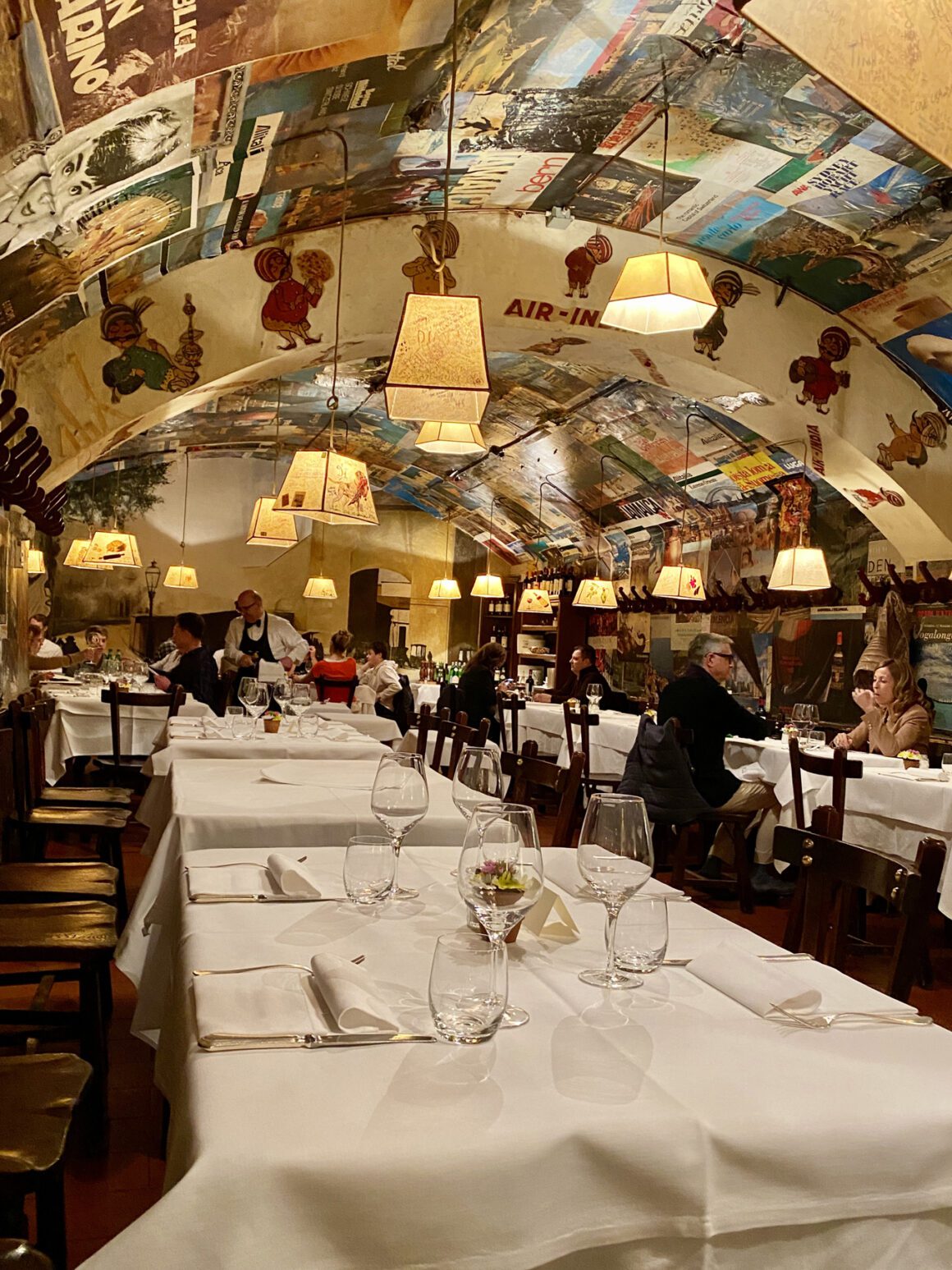
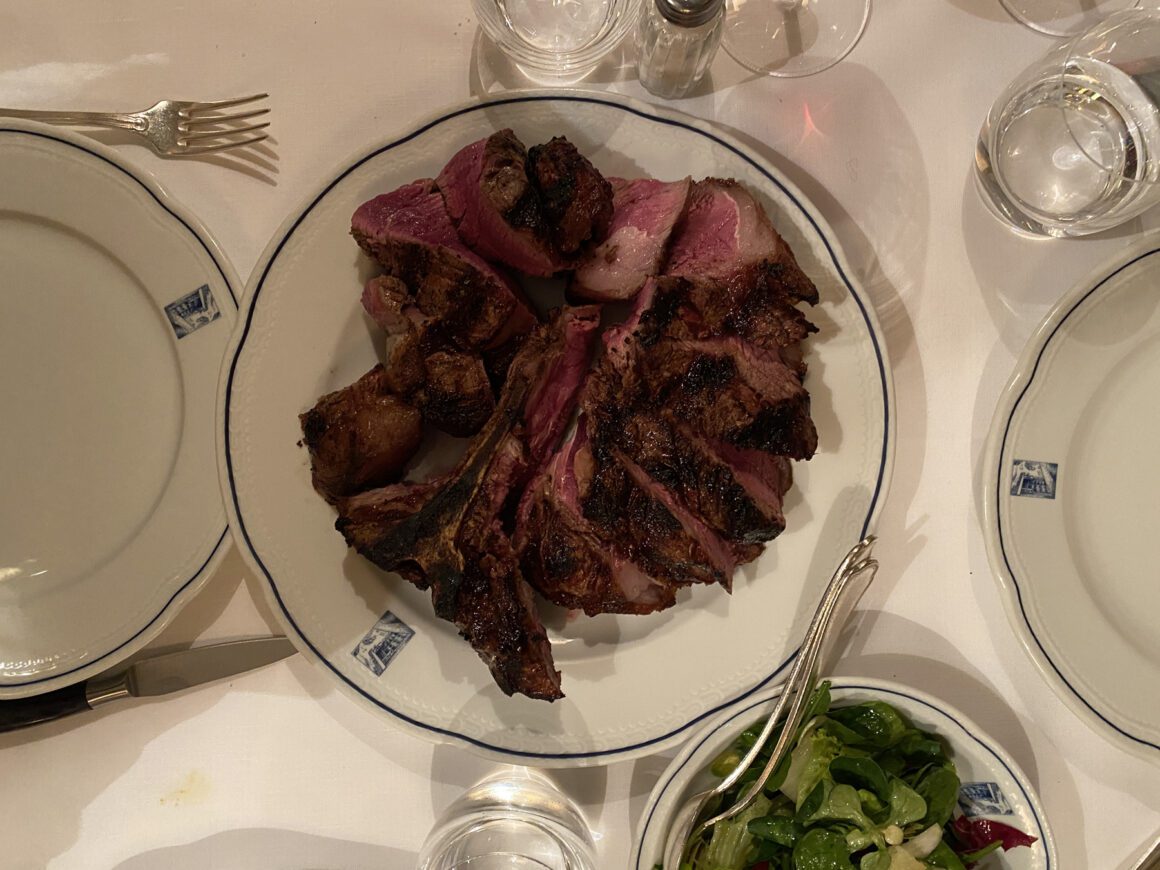
Favorite Gelato Spots: Venchi 1878, Perque No, La Carraia. However, our tour guide was quite the foodie and said you should only buy gelato from places that display a sign: Gelato Artigianale (homemade gelato).


Panini Sandwiches: I Fratellini Firenze and across the street, I’ Girone De’ Ghiotti


Wine Tasting: Alessi, Antinori Cantinetta, and check out one of the wine windows that Stanley Tucci has made so famous, like the one near our hotel called Babae
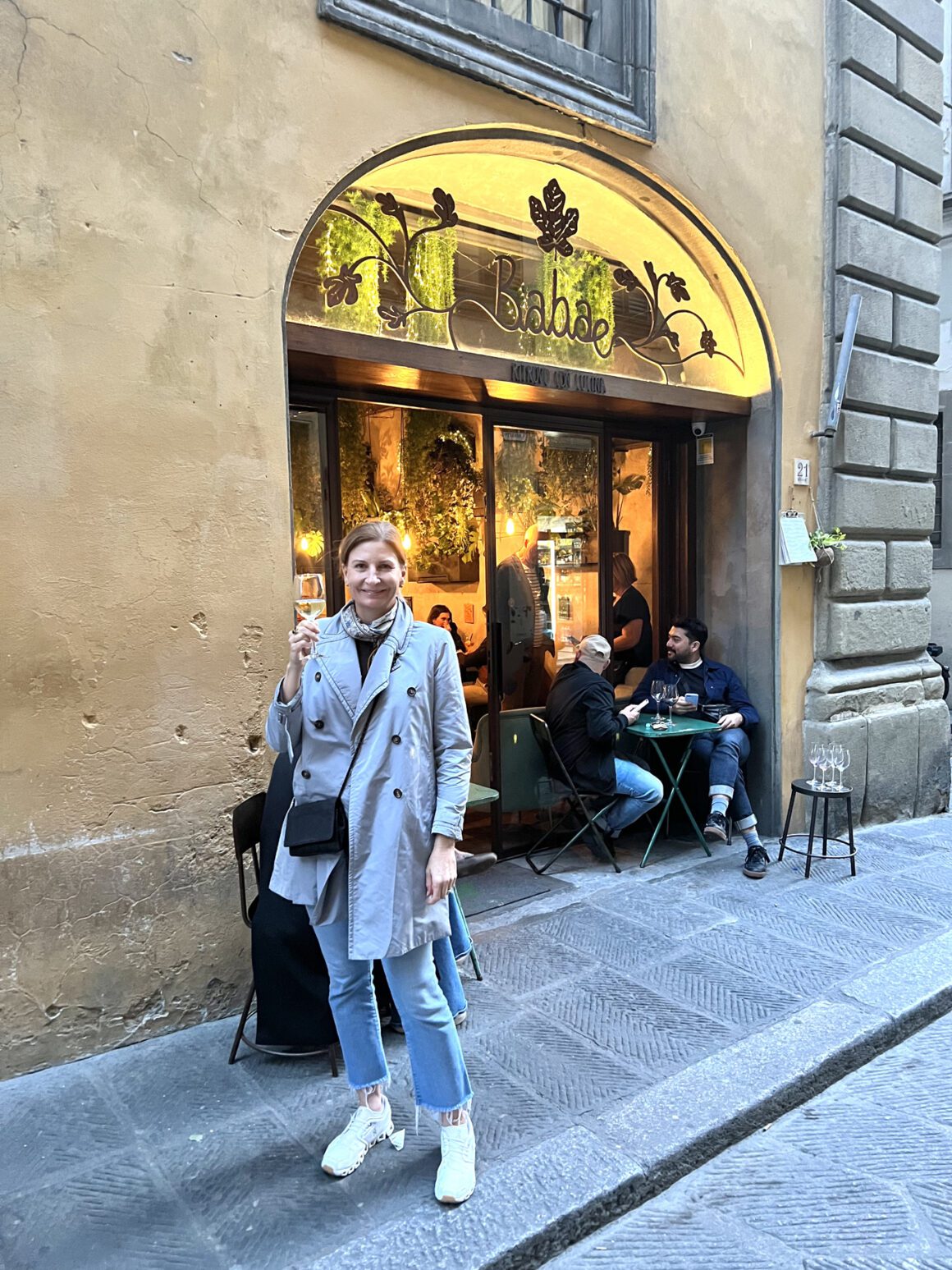
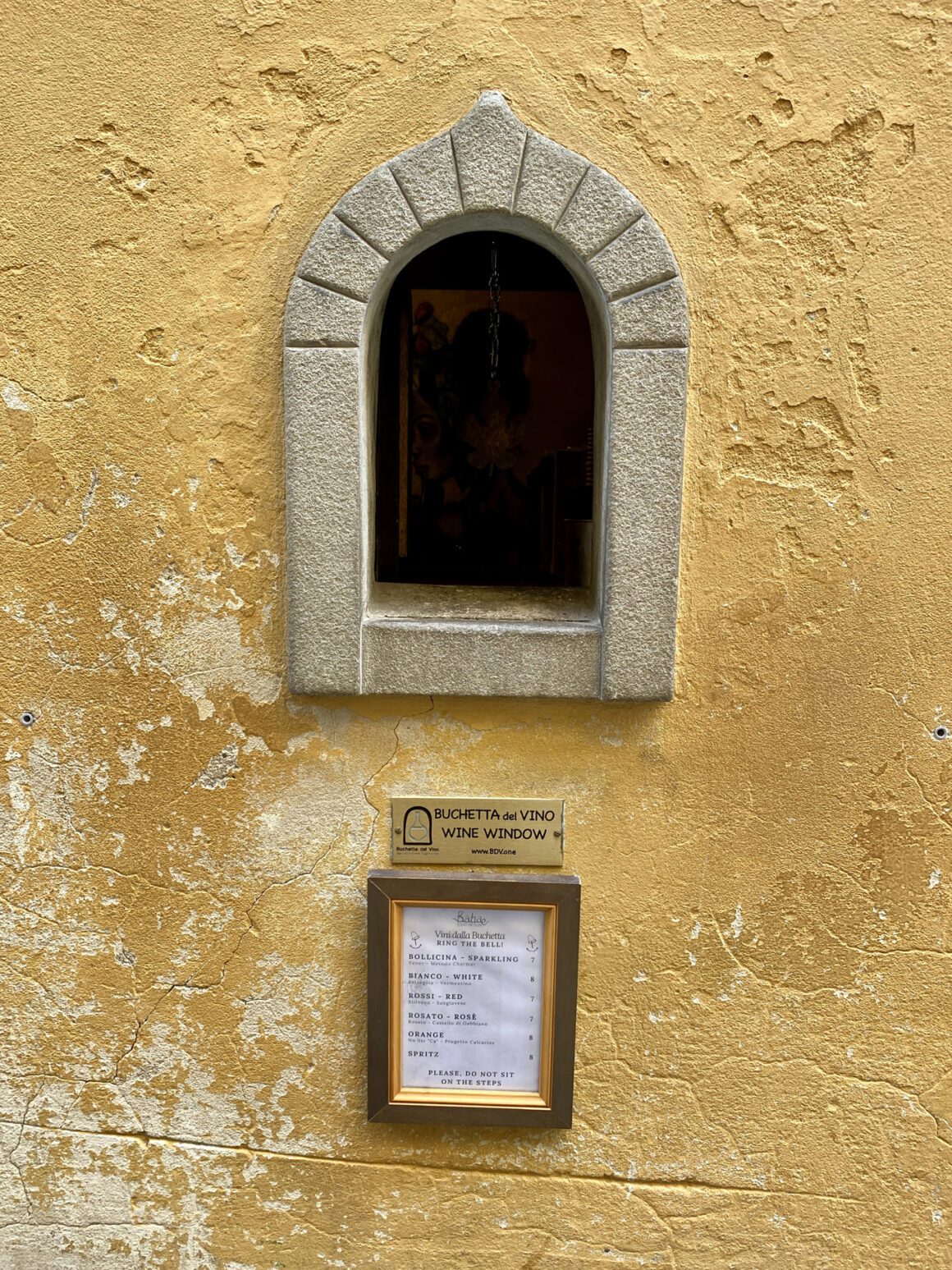
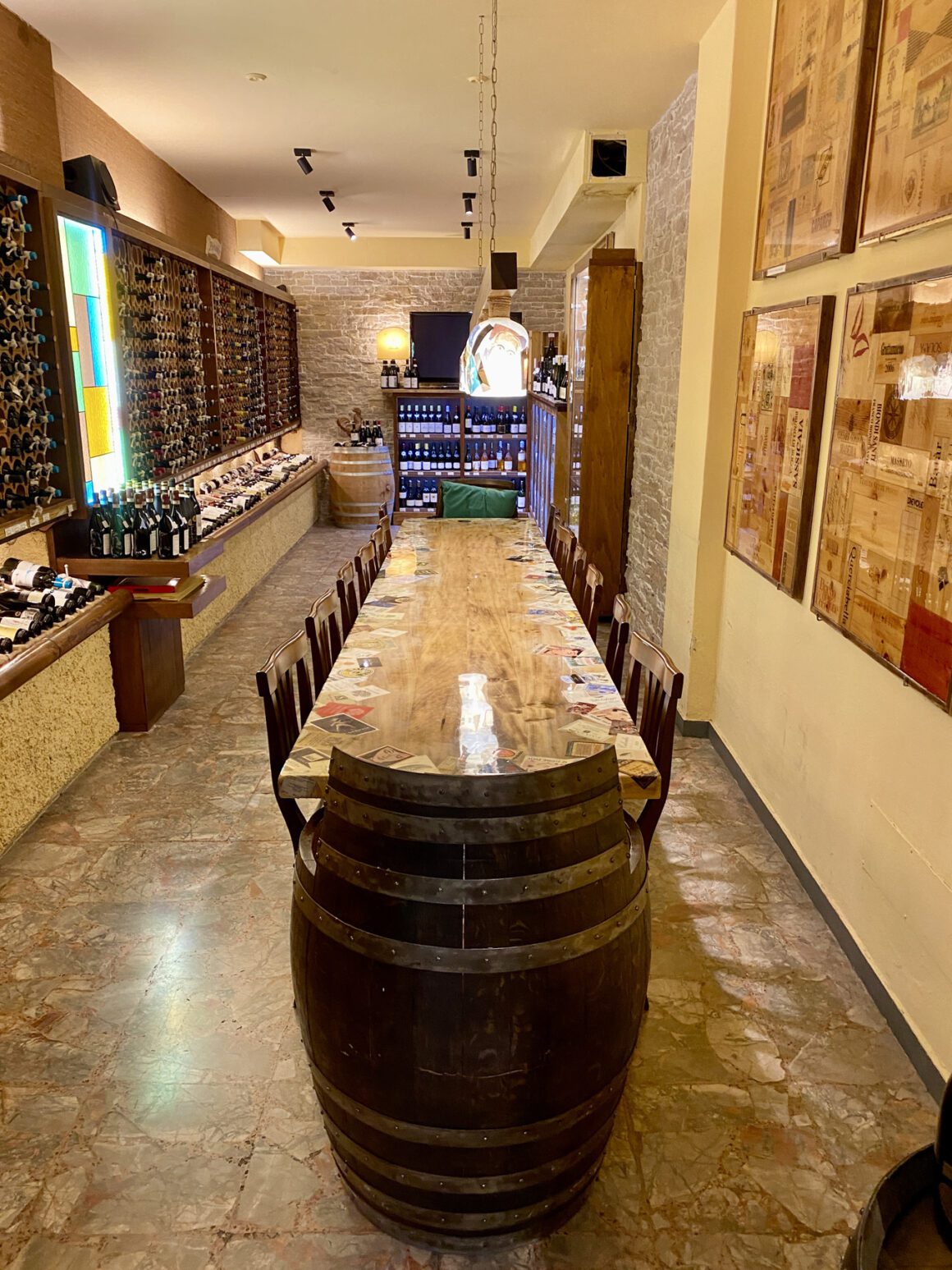
Favorite Cocktail Bars: Bulli & Balene, Rasputin, Il Locale




Where To Get a Great Negroni: Caffè Gilli, Empireo Rooftop Bar, Move On, Rivoire Firenze

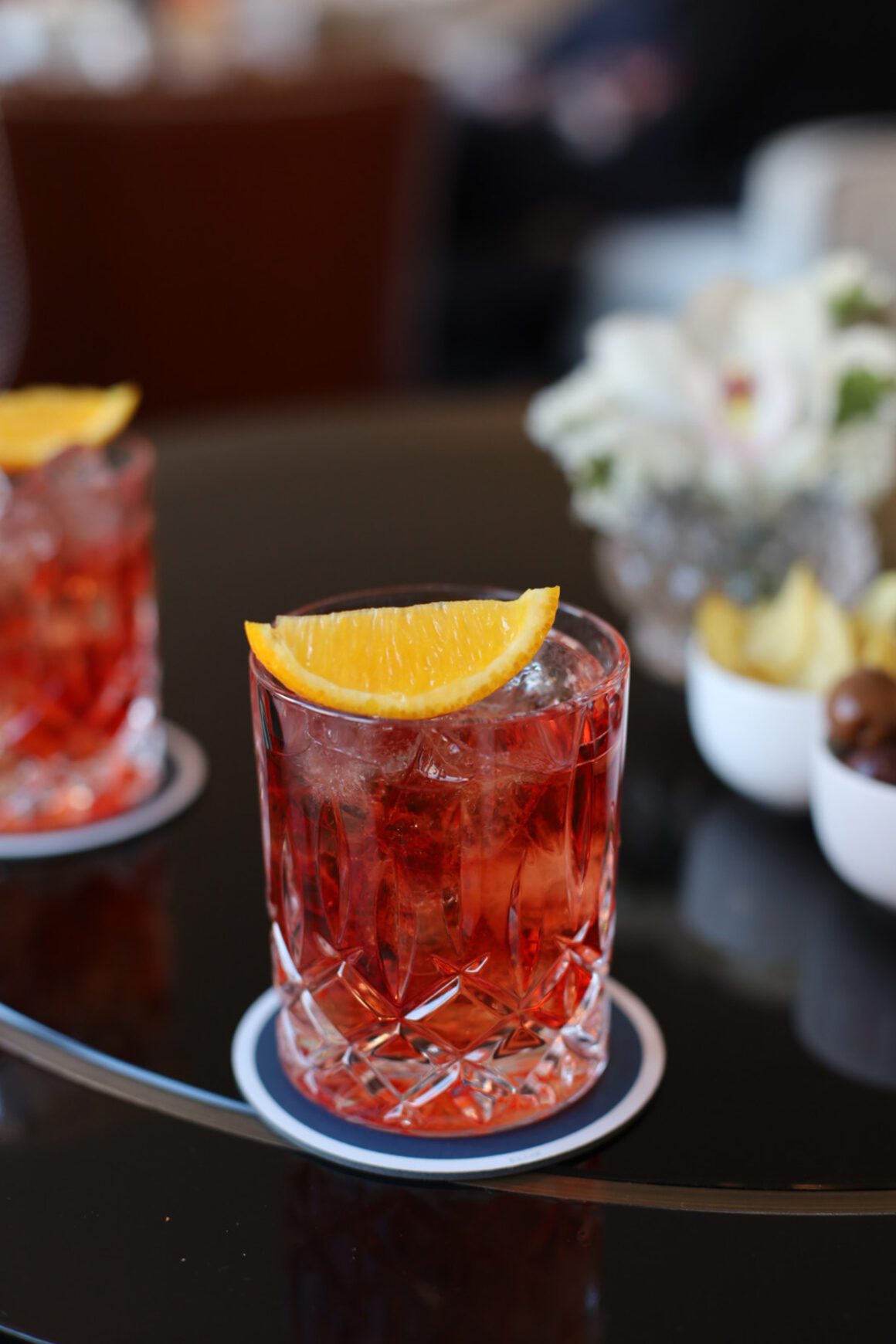



Best Street Food: Fagottini from Pasta Fresca in the Mercato Centrale (our tour guide says all the best restaurants buy their pasta here).
Where We Shopped.
If you don’t have enough time like us, you must at least swing through Gucci Garden (P.za della Signoria, 10). It is beyond description…you have to see it! There is a museum and a store where you can buy one of a kind Gucci products made for Gucci Garden. For leather goods, we met the owners of Noi Leather (Via Porta Rossa, 65/R) while eating pizza at La Bussola and popped into their shop, where my husband bought me a beautiful suede jacket. The Scuola di Cuoio (Via di S. Giuseppe, 5/R) was interesting to see, but nothing piqued my interest. Madova (Via de’ Guicciardini, 1/red) is great for leather gloves. Of course we went shopping at Il Papiro (Piazza del Duomo, 24-red) for stationary and journals, and I bought some really fun friulane slippers at Heart to Heart (Via Santo Spirito, 54R). If you have small children, look for Taf (Via Por Santa Maria, 17r), and if you love unique pieces of jewelry, try Angela Caputi (Via Santo Spirito, 58r).












